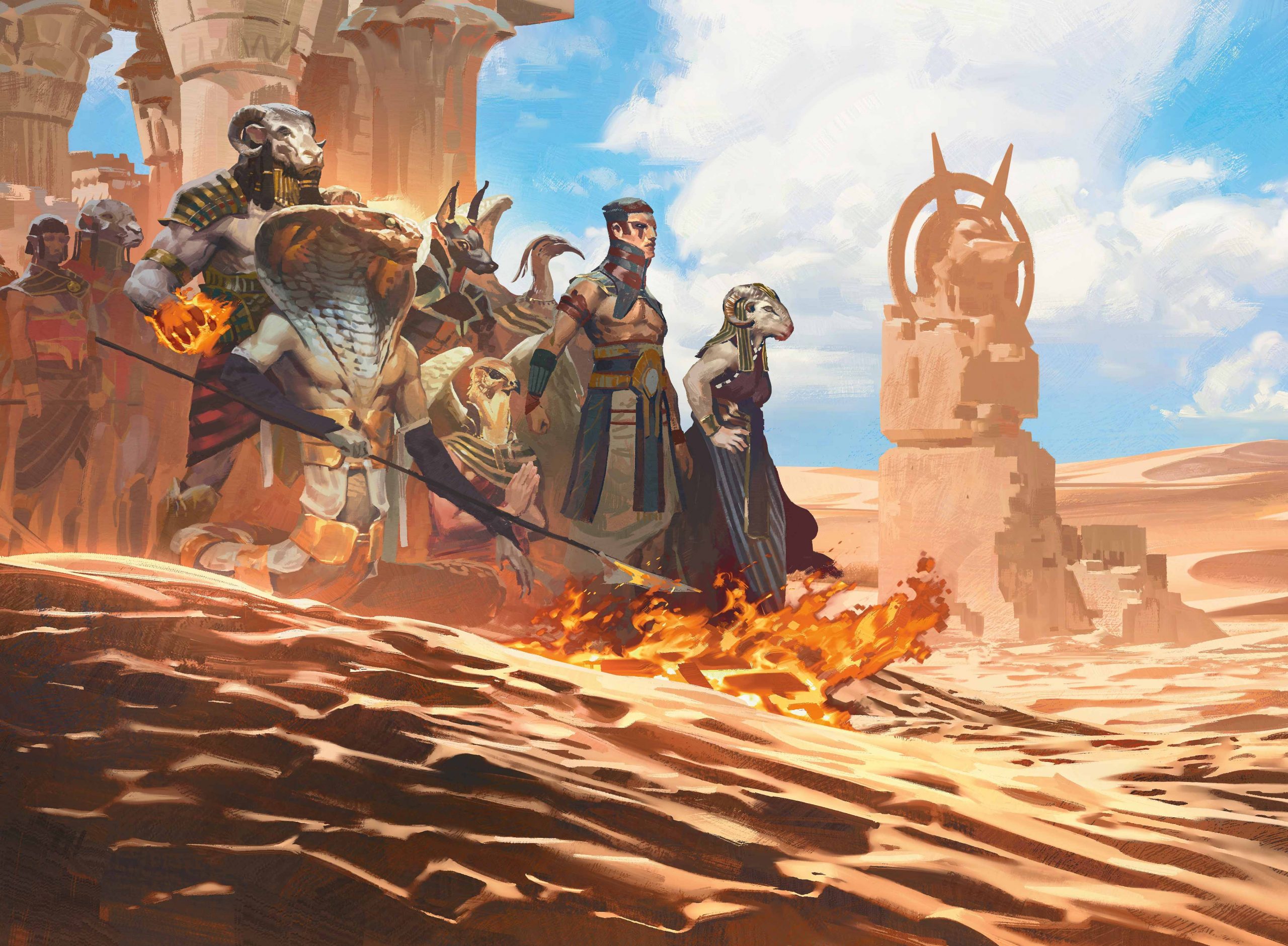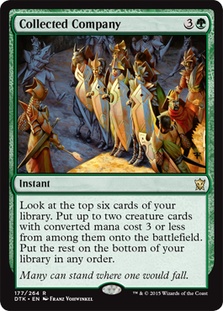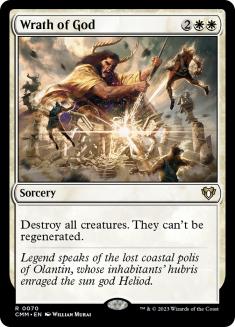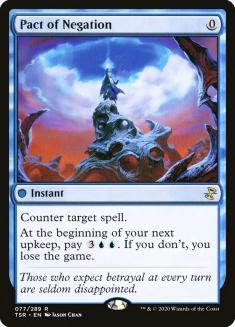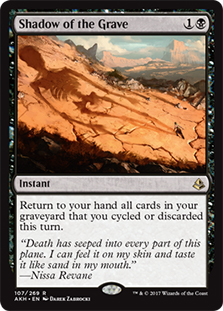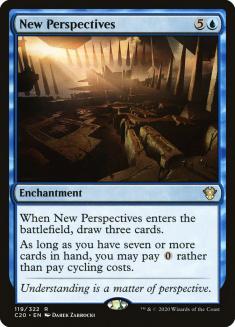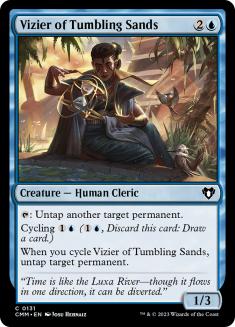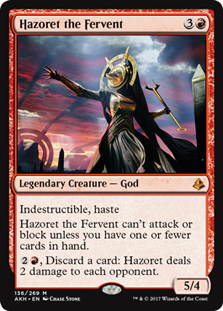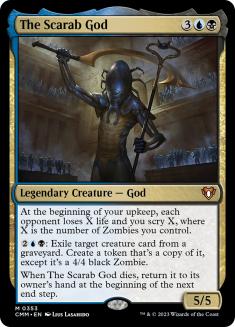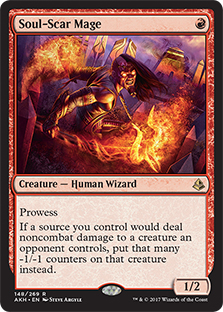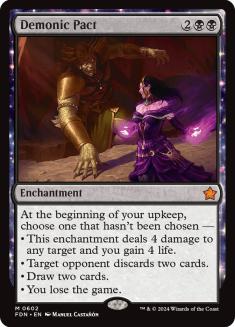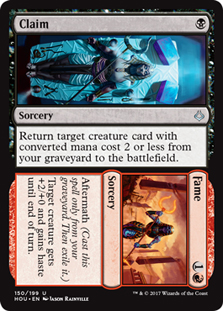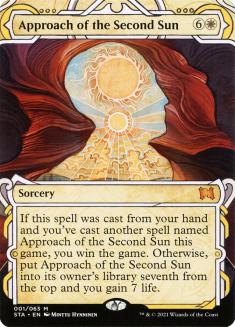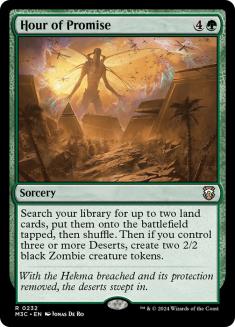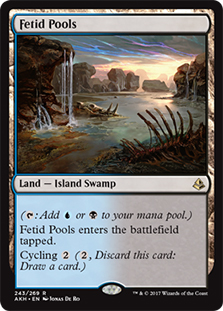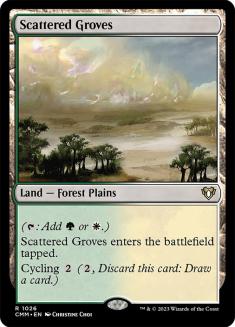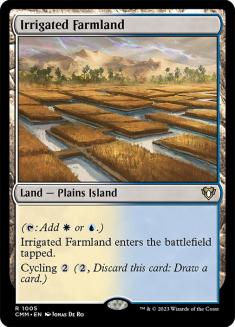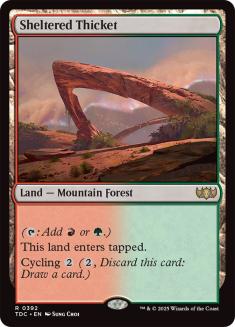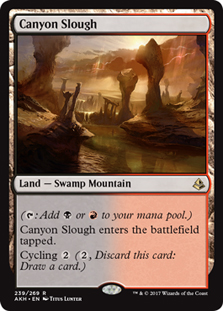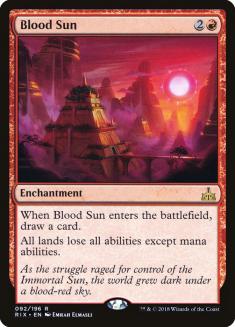It was a ton of fun debuting as a commentator last week and Bryan Gottlieb was a breeze to work with as always. The best deck in the room won the tournament, which is a breath of fresh air in an oftentimes unjust world. This level of inbreeding for the mirror (and the success that it saw) means that no one should be giving up on Core Set 2021 Standard. There’s a lot of work to do, and a good format just a few churns away. If you’re totally lost, I suggest attacking with one-mana creatures (surely that seamless plug gets me some equity, yeah?).
All that said, Amonkhet Remastered came out on Arena last week, and that means that there’s even more work to do in Historic despite it feeling like we’re fresh off Jumpstart.
First, this article will be in a similar vein to Emma Handy’s piece last week, so I suggest you check that out if you haven’t. I’ll be mostly staying off the stuff she covered (and in particular I think that Jeskai Cycling deck is super sweet).
Her intro basically covers what I have to say, but I think there’s a pretty clear divide of the obvious highlights from Amonkhet Remastered and some of the more subtle build-arounds. There are a lot of tools in the Historic sandbox now that give it a pretty clear differential identity from both Standard and Pioneer.
So, just to put some cards on your mind that have entered the format. We’ll be talking about some, some we won’t, and many of the decks I’ll be showing you today could easily incorporate several of them.
Not to mention the cycling lands, completing a full suite of cycling lands to choose from in the format:
That’s a lot. This is a massive amount of hard hitting content to tackle, and we’ve already seen streamers and other folks starting to succeed with some of the outliers — Collected Company and Thoughtseize in particular with Jund Sacrifice standing out at the time of this writing as the defacto best level 1 deck, in part for its ability to integrate these two cards on top of a strong synergistic gameplan.
You know the drill though, Historic is now extremely rich with content and still underplayed from a competitive perspective. I always encourage seeking innovation and hopefully I can plant some ideas in your head.
The Familiar Stuff
Creatures (23)
- 4 Stitcher's Supplier
- 2 Gutterbones
- 4 Priest of Forgotten Gods
- 4 Dreadhorde Arcanist
- 2 Dreadhorde Butcher
- 3 Kroxa, Titan of Death's Hunger
- 4 Archfiend's Vessel
Lands (18)
Spells (19)
Sideboard

There’s nothing crazy going on here, so I won’t spend much time, but this (in combination with many of the linear aggro decks Emma showed off) is an example of how rich black creature space is now with the addition of Thoughtseize. Thoughtseize, in general, fills such a massive hole that was present in Historic previously.
There were tons of powerful linear approaches to take to the format, but there wasn’t much in terms of hyper-effective stop gaps. Granted, the Arena Open was a format with Wilderness Reclamation, but between Auras, Goblins, the aforementioned Wilderness Reclamation, and various Diligent Excavator combo decks, there was a plethora of powerful strategies that were relatively good at ignoring what an opponent was doing.
Thoughtseize gives the breathing room for slightly slower synergy driven decks to set up shop and get their foot in the door. Similarly, it can be just enough disruption for an aggressive deck to get over the finish line.
I’ll note specifically that Claim//Fame is another awesome tool in the Stitcher’s Supplier toolbox. It can be B: create a 5/5 flying Demon, or recoup a synergy piece, not to mention its aftermath in conjunction with the previous play, or as just a little bit more value on self mill.
Creatures (18)
- 2 Young Pyromancer
- 4 Stitcher's Supplier
- 4 Lazav, the Multifarious
- 4 Kroxa, Titan of Death's Hunger
- 4 Archfiend's Vessel
Lands (22)
Spells (20)
- 4 Innocent Blood
- 4 Thoughtseize
- 1 Cut
- 3 Claim
- 3 Claim the Firstborn
- 1 Call of the Death-Dweller
- 4 Village Rites
Sideboard

Lazav, the Multifarious is something that I’ve messed around with lately in Standard with Uro, but its synergy with Kroxa is arguably as strong due to the lower amount of mana investment. Again, this is another example of all these pieces that have slowly added up over time coalescing into something that’s finally coherent. Claim has two more great targets here between Lazav and Young Pyromancer. I’m particularly pleased with Innocent Blood being a pseudo activator for Claim the Firstborn alongside naturally working well with Archfiend’s Vessel, Stitcher’s Supplier, and Young Pyromancer.
Cut , again, is just a little bit more extra value from the self mill of Stitcher’s Supplier and is a card I’d quickly peg as likely to be overlooked.
Creatures (27)
- 4 Diligent Excavator
- 4 Lazav, the Multifarious
- 2 Fblthp, the Lost
- 4 Kethis, the Hidden Hand
- 4 Gilded Goose
- 4 Emry, Lurker of the Loch
- 3 Uro, Titan of Nature's Wrath
- 2 Lurrus of the Dream-Den
Lands (24)
Spells (9)

In terms of fundamentals there’s nothing too different here in terms of building a Kethis deck, but Collected Company as a pick-up is a huge boon to this deck. It’s pretty obvious that Kethis Combo is a deck that needs to get a smattering of different creatures in combination on the battlefield or in the graveyard and Company is perfect at sculpting games in this manner.
Is the loss of Teferi, Time Raveler too much in terms of weakening this deck to hate? It isn’t clear, but my guess is that the addition of Company is a net-buff to the strategy; it’s more of a factor of how much stronger the format has gotten as a whole.
I’ll note specifically two things — Fblthp, the Lost gets much stronger when it builds your Collected Company into Divinations, and that leaning on Uro previously was a pretty distant plan in the past, Collected Company makes it a lot easier to get an Uro in the graveyard and a Lazav on the battlefield and then set up an untap and attack, prompting more copies of the Elder Giant.
Creatures (31)
- 4 Llanowar Elves
- 4 Elvish Archdruid
- 3 Fauna Shaman
- 3 Craterhoof Behemoth
- 3 Rishkar, Peema Renegade
- 2 Marwyn, the Nurturer
- 4 Paradise Druid
- 2 Fblthp, the Lost
- 4 Kinnan, Bonder Prodigy
- 2 Allosaurus Shepherd
Lands (12)
Spells (17)

During my exploration of Kinnan + Mox Amber after Jumpstart, I had a less Elf-centric version of this deck that had the goal of being as explosive with Kinnan as possible and hoping that it converted into something — most likely a Craterhoof Behemoth kill.
It wasn’t particularly consistent. Collected Company changes that.
Not only does Collected Company give you far more opportunities to assemble your synergies, but it also makes it a lot easier to justify the inclusion of cards that improve your consistency like Fauna Shaman. Spending your entire turn casting it isn’t that exciting, but it is excellent as a supplementary hit in your Company. Overall this deck is pretty straight forward and I’m extremely excited to try it.
It also just kind of casually worked out that the majority of creatures I wanted to play were Druids for Unclaimed Territory, so the mana even happens to be pretty good.
Point is, there are so many decks and packages of creatures that are going to be given life by Collected Company. Keep digging.
Creatures (17)
Lands (9)
Spells (34)

Soul-Scar Mage is another format defining pick up. Not only were traditional Red drops largely in a spot where their cheap creatures have been anemic, but having a legitimate one-drop for spell-based strategies can’t be overstated.
This deck is clean and straight-forward. I still like continuing my exploration of Embercleave in off the wall decks here, although it could easily just be a singleton.
The Off the Wall Temur Combo Decks
Creatures (7)
Lands (23)
Spells (30)

I just love this deck. Way back when Time Spiral came out, I played an Ophidians Eye + OG Mizzet Mystical Teachings deck for a short while. It tickles my jaded heart that this isn’t a completely embarrassing pursuit in 2020.
Yes, the plan is to get to seven mana and drop Niv-Mizzet and Curiosity onto the battlefield. Against the vast majority of decks, this is just good enough, especially with the removal of Teferi, Time Raveler from the format. If they make a move that isn’t Elspeth Conquers Death or something similar, Niv-Mizzet will trigger and shoot them, rinse and repeat.
All of your cards except for Curiosity are good, and Amonkhet Remastered has introduced a ton of curve filling roleplayers like Censor and Supreme Will that are perfect in strategies like these. You aren’t interested in playing the deepest games, so they can cycle or dig away when you need to hit your land drops or the game has developed past the point where most traditional countermagic would be effective.
Creatures (6)
Planeswalkers (3)
Lands (21)
Spells (30)

This deck is actually the bigger meme of the two. Imminent Doom is always a build-around that I loved trying to make work in Limited, but it never had the tools to succeed otherwise. Varying up your mana costs and leaning on various tricks like X spells and Adventure are all tools used here to make the Doom work. Frankly, the opportunity cost is relatively low, and once you’ve triggered it a second time, it’s hard to imagine you haven’t gotten a sufficient return — from there it’s all a cherry on top up to and including ending the game.
The most important thing is that you don’t incorporate too many weak cards to make it work — and we haven’t unless you consider Aether Spellbomb, which at least can cycle at a modest rate. We’re trying to incorporate some familiar end-game components in the meantime with Nissa + Krasis and Expansion//Explosion.
If you wanted to, you could easily make this a Field of the Dead deck.
Vizier of Tumbling Sands
Creatures (25)
- 4 Vizier of Tumbling Sands
- 4 Arcanist's Owl
- 4 Corridor Monitor
- 4 Gadwick, the Wizened
- 2 Thassa, Deep-Dwelling
- 4 Thassa's Oracle
- 3 Barrin, Tolarian Archmage
Lands (6)
Spells (29)

If I had to pick a single card that is poised to make a massive impact in Historic that no one is talking about, it is Vizier of Tumbling Sands.
Vizier has pedigree in Pioneer as a component of the Underworld Breach deck and Lotus Field is still alive and well in Historic. Further, it is simply a fairly unique effect. Here is a pretty modest update to Mono-Blue Devotion from Standard, but Vizier is yet another piece of redundancy in combination with Nyx Lotus. Not only does preemptively playing Vizier work well for removing Nyx Lotus’s ETB tapped clause, but it can function as a massive ritual while you’re going off.
Despite this being a combo deck though, I think it a fairly honest use of Vizier.
Creatures (11)
Lands (19)
Spells (30)

My gut is that this has all the makings of something pretty messed up.
In Standard, Shadow of the Grave + New Perspective was something of a gimmick. The idea was that you essentially get to draw your deck by chaining Shadow of the Grave and generating mana with Vizier and Shefit Monitor, often aided by clunkers like Gift of Paradise.
This deck has a lot of appreciable advantages — better mana, vastly better acceleration, and Lotus Field as an additional engine with Vizier of Tumbling Sands.
The other deck used to have a fail rate, but assuming this is tuned to get an appropriate number of cyclers in the deck, your fail rate should be basically zero assuming you can find a Lotus Field.
As far as killing your opponent, there are a multitude of options with Fae of Wishes and/or Mastermind’s Acquisition. A simple choice is Approach of the Second Sun. The advantage of the latter is that it can get key pieces from your deck; the former can be relooped easily once you’re actually going off.
Another take:
Creatures (15)
- 2 Gempalm Incinerator
- 4 Shefet Monitor
- 4 Vizier of Tumbling Sands
- 2 Fae of Wishes
- 3 Uro, Titan of Nature's Wrath
Lands (15)
Spells (30)

This deck is trying to use Lotus Field in an “unfair” manner with Blood Sun. Blood Sun also has the advantage of turning off opposing Field of the Dead. Shadow of the Grave could easily be a part of your Fae of Wishes sideboard, and like I said, I think Fae potentially gives you limitless options to kill your opponent and possibly even completely mitigate the amount of “bad” cards you have to play.
Perhaps playing the straight forward version but eschewing the gimmick of Blood Sun and playing more tutors is the right approach. The point is, there’s something here, and we haven’t seen a deck like this in Historic that’s basically just “accelerate into a six-drop win the game.”
Closing today out:
Creatures (13)
Lands (29)
Spells (38)
- 2 Wrath of God
- 6 Plains
- 4 Mind Stone
- 4 Thoughtseize
- 4 Demonic Pact
- 3 Trial of Ambition
- 3 Final Payment
- 4 Oath of Kaya
- 4 Doom Foretold
- 4 Treacherous Blessing
Sideboard

I also love Demonic Pact. I don’t want to admit how much time I’ve spent trying to make that card work. It just so happens, this time it actually has supporting pieces.
The “Prison” Orzhov Blink (Yorion) deck in Standard frankly just picks up a ton of great tools in Historic now between Thoughtseize, Demonic Pact, Mind Stone, and Trial of Ambition. The deck gets leaner, more disruptive, and has more powerful engines — literally everything the deck could ask for.
It clearly has a weakness to Field of the Dead once that gets going, but frankly, this deck might just be able to close quickly; the burn you out mode of Oath of Kaya gets seriously accelerated if Demonic Pact can also just go face every turn.
Keep exploring, there’s a wealth of brews beneath the surface of this massive content drop. Hopefully, it’s finally time for Historic to be a brewers paradise with Thoughtseize and the removal of Wilderness Reclamation.

